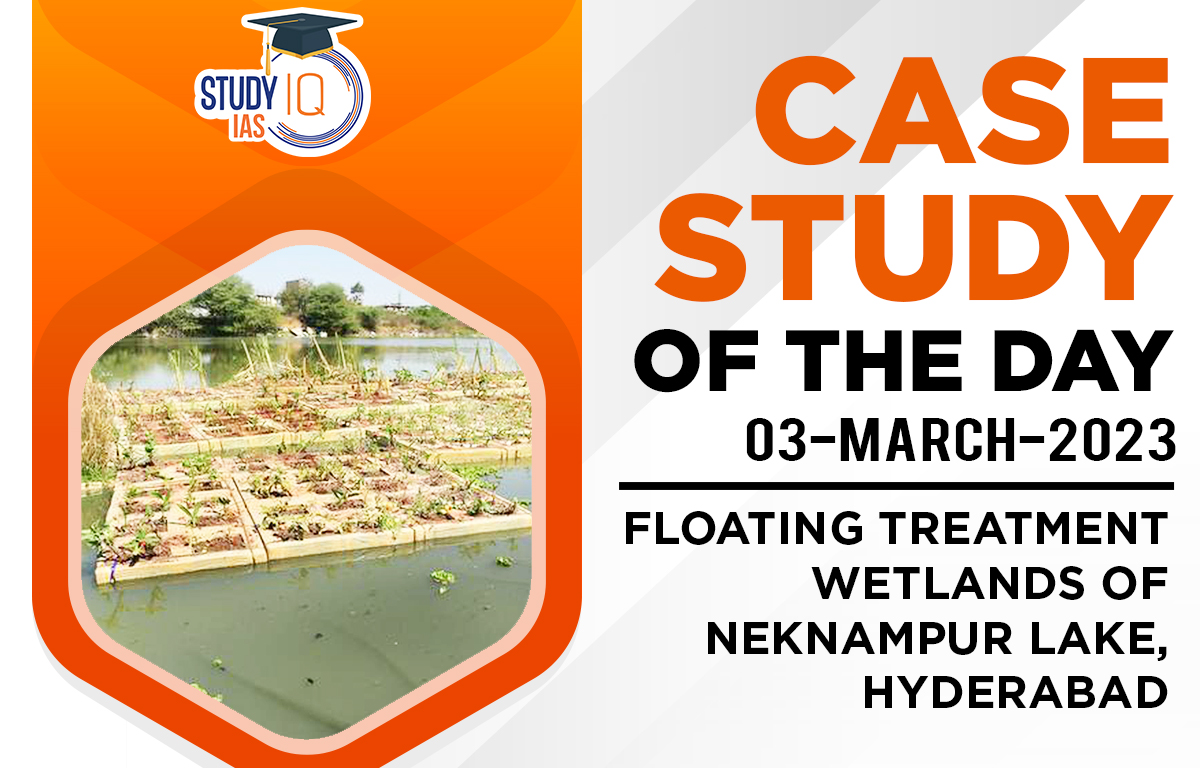Table of Contents
Background: A radical new method called floating treatment wetlands (FTW) has emerged as an effective and sustainable solution to address the increasing pollution levels in urban lakes.
About Floating Treatment Wetland method in Neknampur Lake
- The method of Floating treatment wetlands (FTW) consists of artificial islands with plants that stay afloat on the lake, which clean the lake through a hydroponics system, resulting in a cleaner, beautiful lake and an improved habitat for creatures that depend on it.
- The Neknampur FTW, in the outskirts of Hyderabad, has been recognized as the largest of its kind in the country, and has been created by an NGO along with the Hyderabad Metropolitan Development Authority (HMDA), to revive the lake.
- The causal factors of pollution:
- Untreated sewage from the nearby towns.
- Dumping of garbage by nearby residents.
- Benefits of FTW:
- The plants on the floating raft absorb the high levels of phosphorus and nitrogen in the sewage water entering the lake.
- FTW incurred only a fraction of what a conventional sewage-treatment plant would cost.
- Cleared weed is being used as an organic manure by mixing it with cow dung, to grow plants both in the FTW and in the surroundings.
- Process has contributed to biodiversity and beautification, while helping the locals earn a living by reviving fishing activities.

Conclusion
- Unplanned urbanization in India has deteriorated the quality of water bodies, leading to consequent impacts during floods, lowering groundwater levels, etc.
- Hence, the need of sustainable solutions like above to gain from the benefits of natural ecosystems.


 Transition to Electric Vehicles (EVs) in...
Transition to Electric Vehicles (EVs) in...
 Logistics Ease Across Different States (...
Logistics Ease Across Different States (...




















